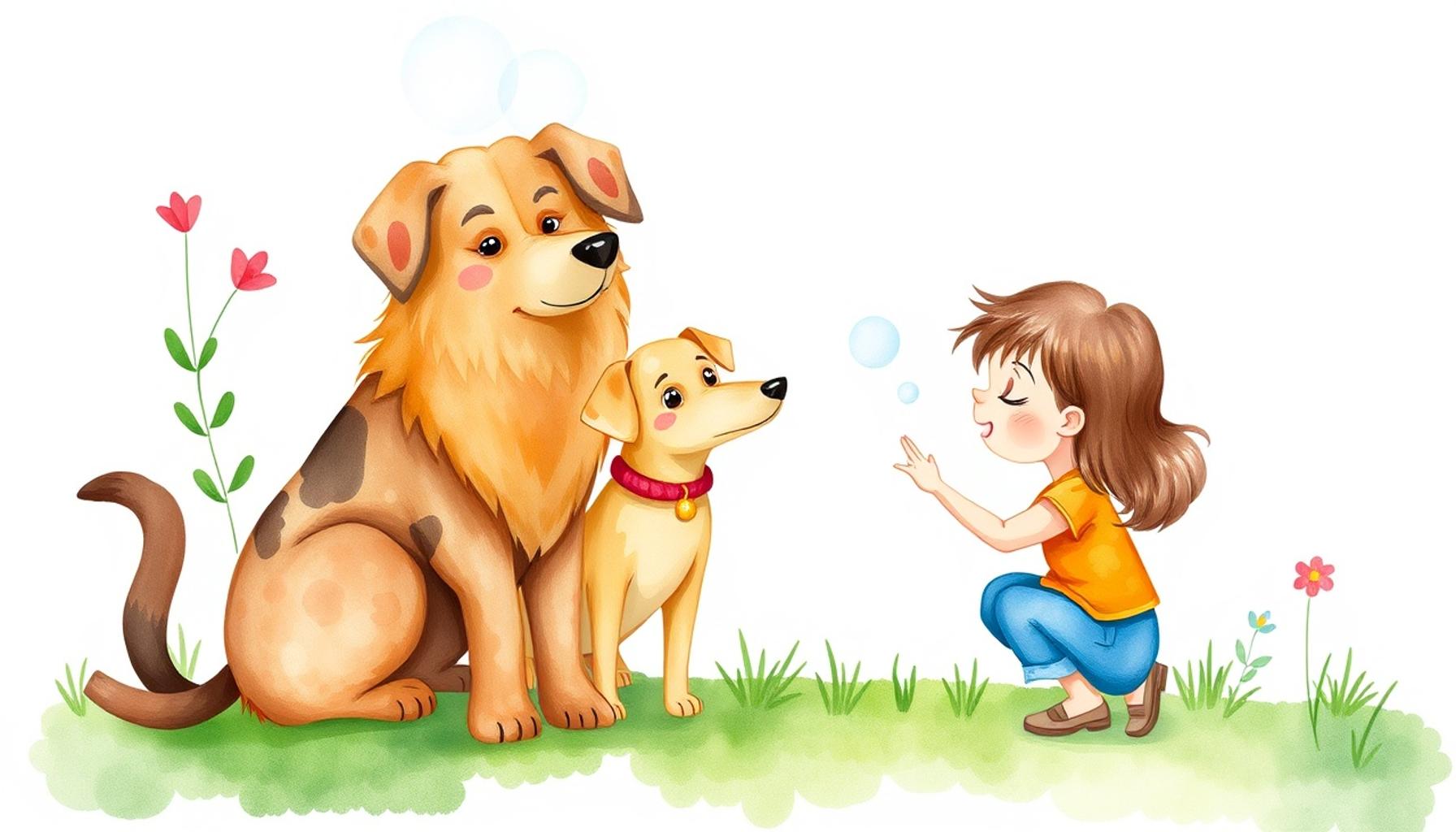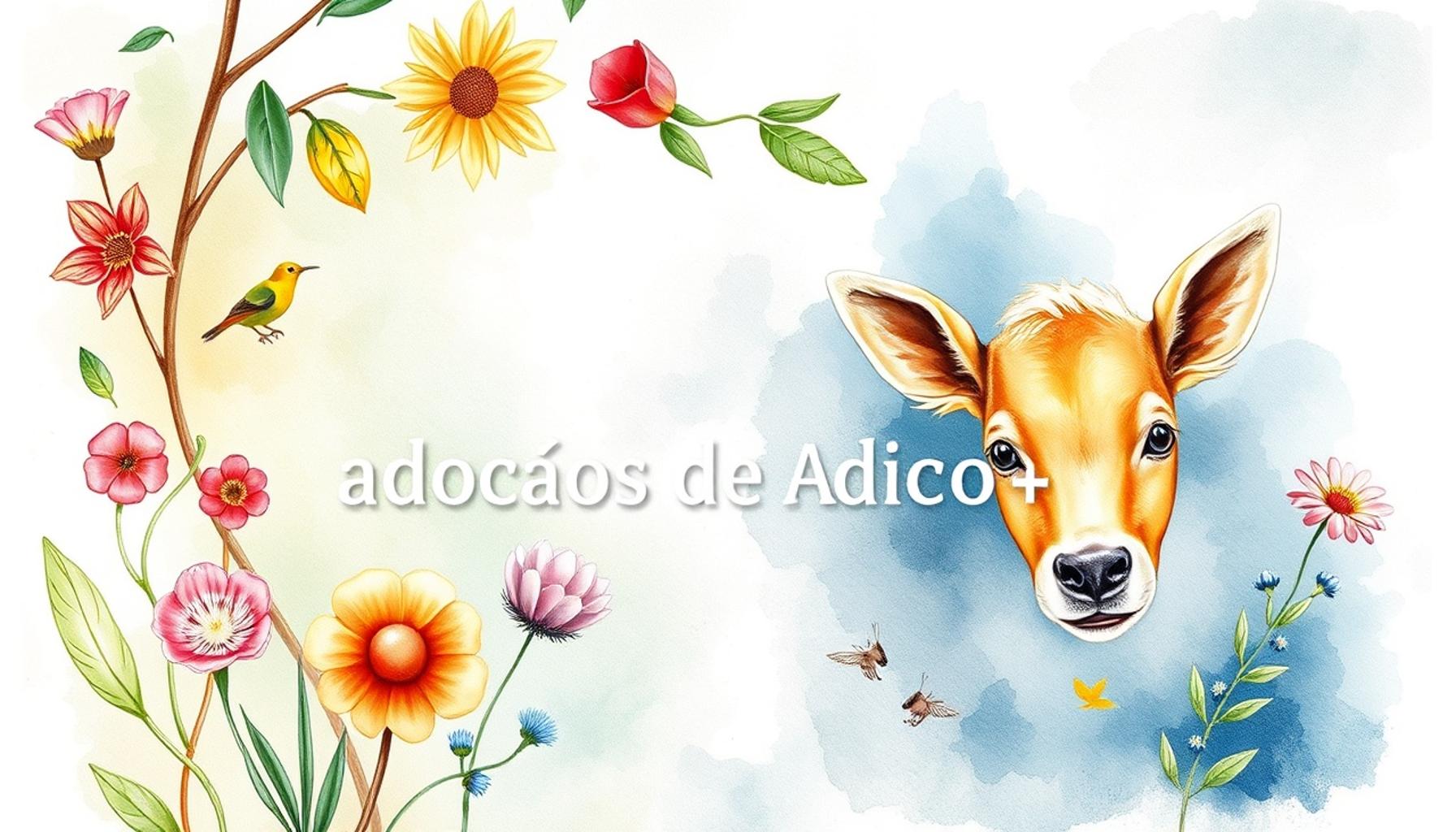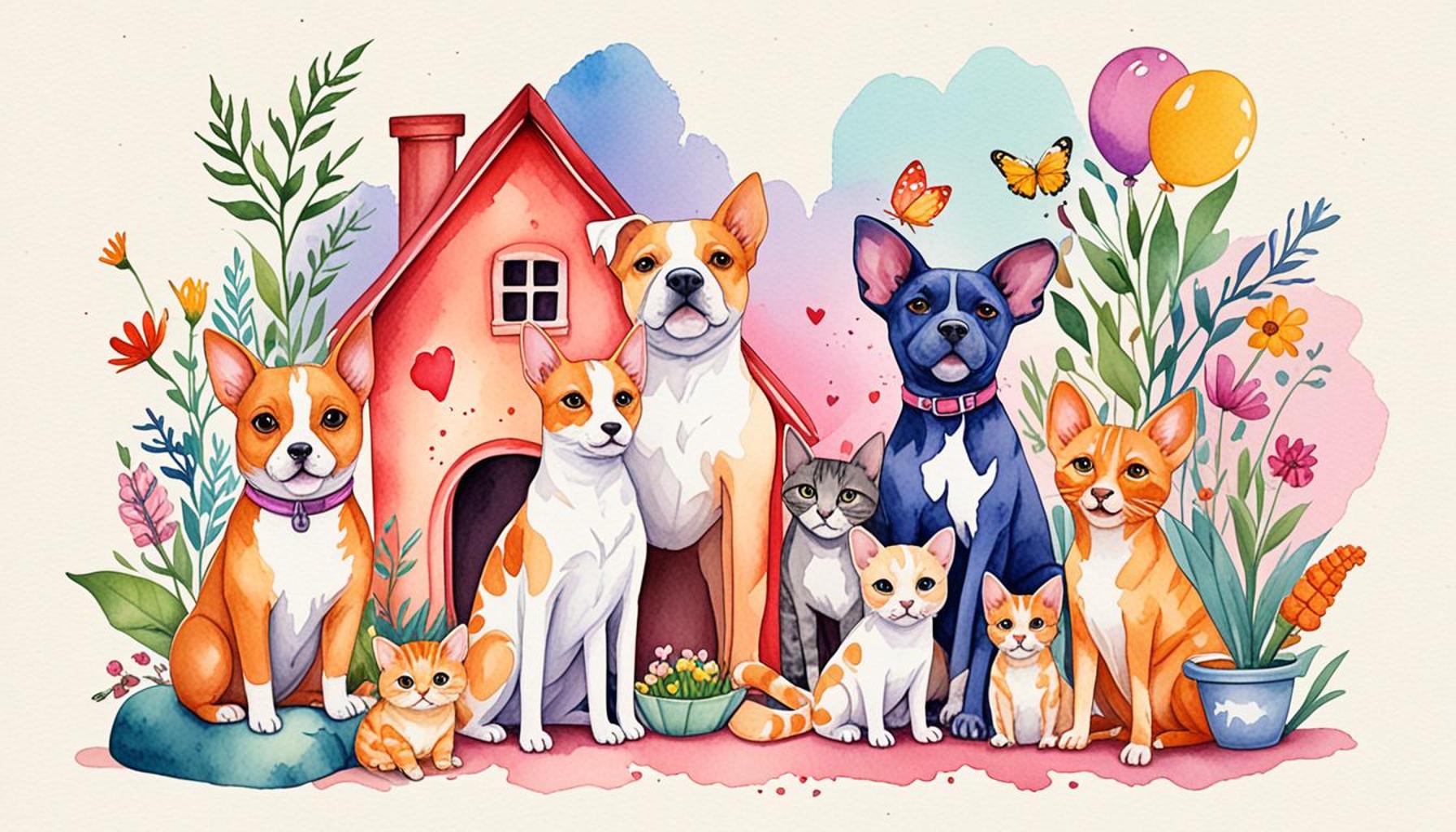Animal Adoption and Family Integration: Building Bonds between Pets and Children

Creating Lifelong Bonds
The journey of animal adoption is not just about finding a pet; it is a profound experience that fosters connections capable of lasting a lifetime. Integrating a furry friend into a family can enrich everyone involved, especially children, by providing companionship, warmth, and a sense of responsibility that is both rewarding and educational. Numerous studies suggest a strong correlation between pet ownership and the development of key social and emotional skills in children, underscoring how these relationships can shape a child’s upbringing.
Key Reasons to Consider Adoption
- Emotional Growth: Owning a pet can significantly enhance a child’s ability to empathize with others. For instance, when children observe or interact with a pet displaying a range of emotions, they learn to identify and understand feelings, both in animals and themselves. This emotional awareness extends to their interactions with peers and family members.
- Enhanced Social Skills: Caring for a pet often necessitates teamwork among family members. Whether it involves walking a dog, ensuring the pet is fed, or sharing responsibilities like grooming, these activities promote collaboration, thereby improving communication and interpersonal skills among children.
- Health Benefits: Several studies indicate that children with pets may report lower levels of stress and anxiety. For instance, petting a dog or cat has been shown to release endorphins, leading to alleviated stress levels. Doing activities with pets can also encourage children to engage in physical play, supporting their overall health and wellness.
As families in the United States actively explore pet adoption, many find themselves delighted by the profound and positive impact their new family members can have on their children’s development. The commitment involved in raising an animal fosters a sense of responsibility that teaches children valuable life lessons, such as the importance of compassion, patience, and routine.
Introducing a Pet to Your Family
The integration process between a pet and a family requires careful planning and understanding of both animal behavior and children’s needs. Here are some essential points for families to consider:
- Choosing the Right Pet: Assess your family’s lifestyle, energy levels, and available space before adopting. For example, breeds like Golden Retrievers may thrive in active households, while a more laid-back breed, such as a Bulldog, may be suitable for less active families.
- Gradual Introduction: It is crucial to allow your child to interact with the pet slowly. This could mean visits to a local shelter or fostering a pet first so everyone can adjust to the new dynamics comfortably.
- Establishing Routines: Creating structured feeding and care schedules is essential for fostering a strong bond. Kids can take part in daily activities, from feeding to playtime, instilling a sense of belonging within the pet’s life.
Understanding the dynamics between pets and children can greatly transform the adoption experience. Each thoughtful step taken towards nurturing this bond establishes the foundation for joyful shared experiences and priceless lifelong memories. The act of adopting a pet not only saves an animal in need but also enriches the lives of everyone in the family, forging connections that endure through the years.
LEARN MORE: Click here to uncover the truths about cat training

Understanding the Power of Pets in Family Dynamics
The decision to adopt an animal often revolves around the hope of enriching family life and nurturing the emotional growth of children. This process of family integration with a new pet is an opportunity to not only rescue a creature in need but also to cultivate support systems and resilience in young minds. As families embark on this journey, they discover that the presence of a pet in the household can significantly shape a child’s development in profound ways.
The Developmental Benefits of Pet Ownership
A multitude of studies highlight the various developmental benefits that accompany pet ownership for children. Having a pet encourages an active lifestyle, fosters responsibility, and offers companionship, all contributing to a child’s cognitive and social development. Here are some noteworthy benefits:
- Responsibility and Trust: Caring for a pet teaches children about accountability. Tasks such as feeding and bathing a pet instill a sense of routine and dependability. This aspect becomes particularly important in building trust, as children learn that their pet relies on them for well-being, mirroring the dependencies that exist in human relationships.
- Communication Skills: Pets often act as catalysts for communication within families. Engaging children in conversations about their pet’s needs, health, and personalities can improve language skills and promote discussions that enhance emotional intelligence. Parents who encourage such dialogues open avenues for deeper understanding and relationship-building.
- Empathy and Compassion: Children who grow up with pets tend to exhibit greater levels of empathy. Observing and caring for animals allows them to practice these emotions firsthand, adjusting their behavior in social scenarios. Learning to interpret a pet’s body language and responding kindly cultivates a nurturing mindset beneficial in all relationships.
Moreover, the bond between children and pets goes beyond companionship. The act of adopting a pet can serve as a platform for teaching important life lessons about love, loss, and companionship—lessons that resonate throughout a child’s life. Many families report that their pets have served as crucial emotional support during pivotal moments, reinforcing the idea that pets are invaluable family members.
Cultivating a Positive Environment for Integration
As families prepare to welcome a new pet, creating a positive environment is essential. This process involves careful consideration to ensure that both children and pets feel safe and welcomed. Here are some strategies to foster a harmonious atmosphere:
- Education: Before bringing a pet home, educating children about the expected behaviors and needs of the chosen animal is vital. Teaching them about social cues and respect for the animal’s space can prevent potential misunderstandings and foster a harmonious relationship.
- Involvement: Encourage children to participate in the adoption process. Letting them choose the pet or help in preparations, such as selecting food or toys, enhances their sense of ownership and responsibility.
- Supervised Interactions: Initial introductions between pets and children should be supervised to ensure safety and comfort. This cautious approach allows families to monitor reactions and provide guidance, ensuring that both the animal and the child feel secure.
By understanding and implementing these strategies, families can build a loving household where both pets and children thrive together. Integrating a pet into the family is not merely an act of kindness; it is a stepping stone towards enriching lives, creating connections, and fostering a deeper appreciation for the living beings that share our world.
| Advantage | Description |
|---|---|
| Emotional Development | Integrating pets into a family environment teaches children empathy, responsibility, and emotional intelligence. |
| Increased Physical Activity | Having pets encourages children to engage in physical activities like walking, playing, or training, promoting a healthier lifestyle. |
Incorporating pets into the family unit can significantly enhance emotional bonds between parents, children, and their furry companions. The process of animal adoption provides families with the opportunity to cultivate vital skills not only in care for pets but also in nurturing interrelationships. For instance, children learn to express affection and care, fostering their emotional growth. By nurturing animals, children develop a strong sense of empathy and responsibility, which are essential traits for personal development. Furthermore, the joy of playing and training pets creates a lively environment that encourages increased physical activity for everyone involved. These bonding experiences shape family dynamics positively, leading to happier and more integrated households. Embracing the journey of animal adoption paves the way for a deep-seated connection that transforms lives and creates lasting memories.
DIVE DEEPER: Click here to learn more
The Role of Pets in Emotional Development
Beyond the tangible benefits of responsibility and communication, integrating a pet into a family can have significant effects on a child’s emotional development. The unconditional love and companionship provided by pets can be a comforting presence in a child’s life, especially during times of stress or change. Many families find that pets serve as emotional anchors, helping children navigate the complexities of growing up.
Supporting Mental Health Through Animal Companionship
According to research from the American Psychological Association, children who grow up with pets often report lower levels of anxiety and stress. The presence of an animal can serve as a calming influence, helping children process emotions and providing a distraction from daily pressures. This relationship can be especially beneficial for children facing challenges, such as those with autism or attention-deficit/hyperactivity disorder (ADHD), where pets often play a key role in social interaction and emotional regulation.
- Development of Coping Skills: Interactions with pets can foster resilience in children. Whether experiencing the daily ups and downs of pet ownership or coping with a pet’s illness, children learn valuable skills for managing their emotions. These experiences teach children problem-solving skills and coping strategies they can apply to other areas of life.
- Stress Reduction: Engaging in playtime or simply petting a dog or cat can trigger the release of oxytocin, the hormone associated with bonding and relaxation. This physiological response can help minimize stress levels and foster a sense of security in children.
- Encouraging Routine and Stability: Pets thrive on routine, which helps instill structure in a child’s life. Regular feeding times, walks, and play sessions reinforce a sense of predictability, creating a stable environment that nurtures emotional well-being.
Special Considerations in Family Integration
While the incorporation of a pet can be tremendously beneficial, it is crucial to consider factors that can affect the family’s dynamic. Each family has its unique circumstances and understanding these nuances can aid in a more fluid integration process. Here are some significant considerations to keep in mind:
- Choosing the Right Pet: Not all pets are suitable for every household. Families must assess their lifestyle, space, and the ages of their children when selecting a pet. For example, a high-energy dog may be better suited for an active family, while a more independent cat might be perfect for a busy household. Researching various breeds and their temperaments can help ensure a good match.
- Time Commitment: Adopting a pet is a long-term commitment that can impact family schedules. Parents should ensure that everyone is on board and that time is available for caring for the pet. Balancing responsibilities will enable all family members to engage positively with both the pet and each other.
- Gradual Integration: Introducing a pet to the family should be a gradual process. Children may need time to acclimate to the new dynamics of having a pet. By setting realistic expectations and allowing for gradual interaction, families can foster a stronger bond and ease any potential anxiety surrounding the new addition.
Ultimately, families that embrace the journey of pet ownership not only provide a loving home for an animal in need but also cultivate a rich environment for their children to learn and grow emotionally. Understanding the profound role animals can play in the developmental journey of children encourages families to approach adoption with empathy and preparedness, which can ultimately lead to a more harmonious home life.
DIVE DEEPER: Click here to learn more
Conclusion: The Lifelong Benefits of Pet Integration
Integrating a pet into a family setting is not merely an act of kindness; it is a transformative experience that enriches the lives of both children and animals. As highlighted throughout this article, pets are not just companions but also vital supporters in a child’s emotional and social development. They foster essential life skills, from responsibility to empathy, and provide unwavering support during life’s challenges. The relationship between children and pets can cultivate resilience, instill a sense of routine, and even contribute to improved mental health.
However, the journey of animal adoption and family integration requires thoughtful consideration. Families must be diligent in choosing the right pet, factoring in lifestyle, age of children, and the overall fit within the household. Understanding that time commitment is crucial can help families engage more deeply with their new furry members. Gradually introducing a pet can further ease this transition, ensuring that both children and animals acclimate smoothly to their new roles in each other’s lives.
In essence, when families embrace pet ownership with intention and care, they set the stage for creating deeper bonds that can last a lifetime. The love shared between a child and a pet provides invaluable lessons that extend far beyond the home, forming compassionate, caring individuals prepared to contribute positively to society. As such, animal adoption stands not only as a responsibility but as an opportunity for enriching family dynamics and nurturing the future generation.


